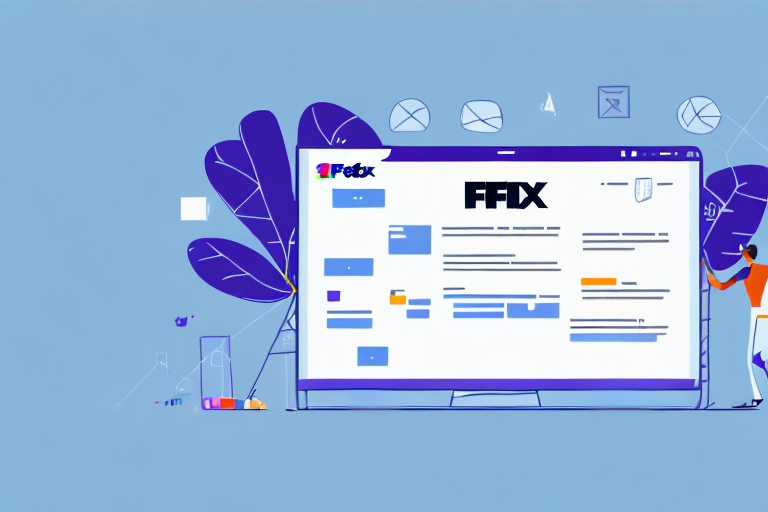Where Does XML Go for FedEx Ship Manager?
FedEx has established itself as one of the leading logistics providers in the world, catering to the needs of millions of businesses and individuals across the globe. Many of these businesses today rely on sophisticated solutions like FedEx Ship Manager to streamline their logistics operations, reduce costs, and improve efficiency. In this context, XML plays a crucial role in facilitating seamless integration with FedEx Ship Manager, enhancing its capabilities. Let's delve deeper into the subject and understand the importance of XML in FedEx Ship Manager.
Understanding the Importance of XML in FedEx Ship Manager
XML, or Extensible Markup Language, is a widely-used data format that defines a set of rules for encoding documents in a format that is both human-readable and machine-readable. Many modern systems and applications rely on XML to communicate, share, and process data. FedEx Ship Manager is no exception. XML integration allows businesses to automate their logistics processes, reduce manual errors, and streamline communication with FedEx services. This integration also enables real-time tracking of shipments, ensuring that businesses have complete visibility into their logistics operations.
According to a Statista report, businesses that implement XML-based integrations experience up to a 30% reduction in manual processing errors. This highlights the efficiency gains possible through XML integration with FedEx Ship Manager.
One of the key benefits of using XML in FedEx Ship Manager is the ability to customize shipping labels and documents. With XML integration, businesses can easily create and modify shipping labels to meet their specific needs. This includes adding logos, barcodes, and other important information to the label. Additionally, businesses can generate custom reports and invoices using XML data, providing them with valuable insights into their shipping operations.
Another advantage of using XML in FedEx Ship Manager is the ability to integrate with other systems and applications. XML is a flexible and versatile format that can be easily integrated with other software and platforms. This allows businesses to connect their logistics operations with other parts of their business, such as inventory management, accounting, and customer relationship management. By integrating these systems, businesses can improve efficiency, reduce errors, and provide better service to their customers.
How to Set Up XML for FedEx Ship Manager: A Step-by-Step Guide
If you're looking to integrate XML into your FedEx Ship Manager, here's a step-by-step guide on how to set it up:
- Log in to your FedEx account and navigate to 'My Profile.'
- Select 'Shipping Administration,' followed by 'File Download.'
- Click on 'File Format Configuration' and select 'Add' to create a new configuration file.
- Select 'XML' as the file format and configure the various options according to your business requirements.
- Save the configuration and generate a key in the 'File Download Configuration' section.
- Use this key to authenticate your XML requests to FedEx Ship Manager.
It's important to note that once you have set up XML for FedEx Ship Manager, you can take advantage of a range of benefits. These include the ability to automate shipping processes, reduce manual data entry, and improve accuracy. Additionally, XML integration can help you to streamline your supply chain and improve overall efficiency. By following the steps outlined above, you can quickly and easily set up XML for FedEx Ship Manager and start enjoying these benefits for your business.
The Benefits of Using XML with FedEx Ship Manager
There are several benefits to using XML with FedEx Ship Manager:
- Seamless integration with other systems and applications, improving data flow and consistency
- Enhanced tracking and visibility into shipments, reducing the chances of errors and delays
- Reduced manual intervention, saving time and resources for businesses
- Automated alerts and notifications, ensuring timely delivery of shipments
Additionally, using XML with FedEx Ship Manager allows for greater customization and flexibility in shipping options. Businesses can create their own shipping rules and preferences, such as preferred carriers or delivery times, and easily integrate them into their shipping process. This level of control can lead to cost savings and improved customer satisfaction.
Common Issues with XML in FedEx Ship Manager and How to Fix Them
While XML integration is generally reliable and efficient, businesses may encounter some common issues that can hinder its effectiveness. These include:
- Incomplete or incorrect configuration of the XML format
- Authentication issues caused by incorrect key generation or invalid credentials
- Compatibility issues with other systems and applications
To address these issues, businesses can seek the assistance of FedEx support or engage with third-party providers that offer XML integration services. Troubleshooting and identifying the root cause of the problem is essential to ensure a seamless shipping process.
Another common issue that businesses may encounter with XML integration in FedEx Ship Manager is the lack of proper documentation and resources. This can make it difficult for businesses to understand and implement the necessary XML configurations and integrations. To overcome this challenge, businesses can refer to the FedEx Developer Resource Center, which provides comprehensive documentation, sample codes, and other resources to help businesses integrate XML with FedEx Ship Manager.
Maximizing the Potential of FedEx Ship Manager with XML Integration
XML integration with FedEx Ship Manager is a powerful tool that can enable businesses to streamline their logistics processes, reduce costs, and improve efficiency. As such, it's essential to approach it strategically and maximize its potential. Some best practices to consider include:
- Ensure that the XML format is configured correctly and meets your business requirements
- Test the integration thoroughly before deploying it into production
- Regularly review and update the XML configuration to ensure that it aligns with business needs
- Collaborate with FedEx support or third-party providers for troubleshooting or optimization
Another important aspect to consider when maximizing the potential of FedEx Ship Manager with XML integration is to ensure that your team is properly trained on how to use the tool. This can include providing training sessions or creating user manuals to help employees understand how to use the tool effectively. By doing so, you can ensure that your team is equipped with the necessary skills to use the tool to its full potential.
It's also important to regularly monitor and analyze the data generated by the XML integration. This can help you identify areas for improvement and make data-driven decisions to optimize your logistics processes. By regularly reviewing the data, you can identify trends, patterns, and potential issues that may be impacting your operations. This can help you make informed decisions to improve efficiency, reduce costs, and enhance customer satisfaction.
A Beginner's Guide to Integrating XML with FedEx Ship Manager
Integrating XML with FedEx Ship Manager can seem daunting for beginners. However, with the right approach, it's easy to get started. The key steps to follow include:
- Understand the benefits of XML integration with FedEx Ship Manager
- Create a configuration file by following the steps outlined above
- Generate an authentication key
- Integrate the XML format with your existing systems and applications
- Test the integration and troubleshoot any issues that may arise
It's important to note that integrating XML with FedEx Ship Manager can greatly improve your shipping process. By automating tasks such as label printing and tracking updates, you can save time and reduce errors. Additionally, XML integration allows for more customization and flexibility in your shipping process. With the ability to create custom labels and shipping rules, you can tailor your shipping process to fit your specific business needs.
Top Tools for Managing and Optimizing XML in FedEx Ship Manager
With so many options available in the market, it can be overwhelming to choose the right tools to manage and optimize XML integration with FedEx Ship Manager. Here are some popular tools to consider:
- XMLSpy, an XML editor and development environment
- MapForce, a visual data mapping tool
- Altova, a suite of tools for XML editing and automation
- No Magic, a modeling and simulation tool
It is important to note that while these tools are popular and effective, they may not be suitable for every business's needs. It is recommended to thoroughly research and evaluate each tool before making a decision. Additionally, it may be beneficial to consult with a professional who specializes in XML integration to ensure the best possible outcome for your business.
Expert Tips on Troubleshooting XML Issues in FedEx Ship Manager
When dealing with XML integration issues in FedEx Ship Manager, it's critical to approach the problem systematically and with the right tools. Here are some expert tips to help troubleshoot issues:
- Use debugging tools to identify the root cause of the issue
- Check the XML format for errors or omissions
- Verify authentication details and credentials
- Collaborate with FedEx support or third-party providers for expert guidance
- Regularly review and update the XML configuration for optimal performance
With these tips and best practices, businesses can effectively integrate XML with FedEx Ship Manager and unlock its full potential to streamline their logistics processes.
It's important to note that XML integration issues can also arise due to changes in the FedEx Ship Manager system or updates to the XML schema. In such cases, it's recommended to stay informed about any changes and updates and adjust the XML configuration accordingly. Additionally, businesses should consider implementing automated testing and monitoring tools to proactively identify and resolve any XML integration issues before they impact their logistics operations.






















